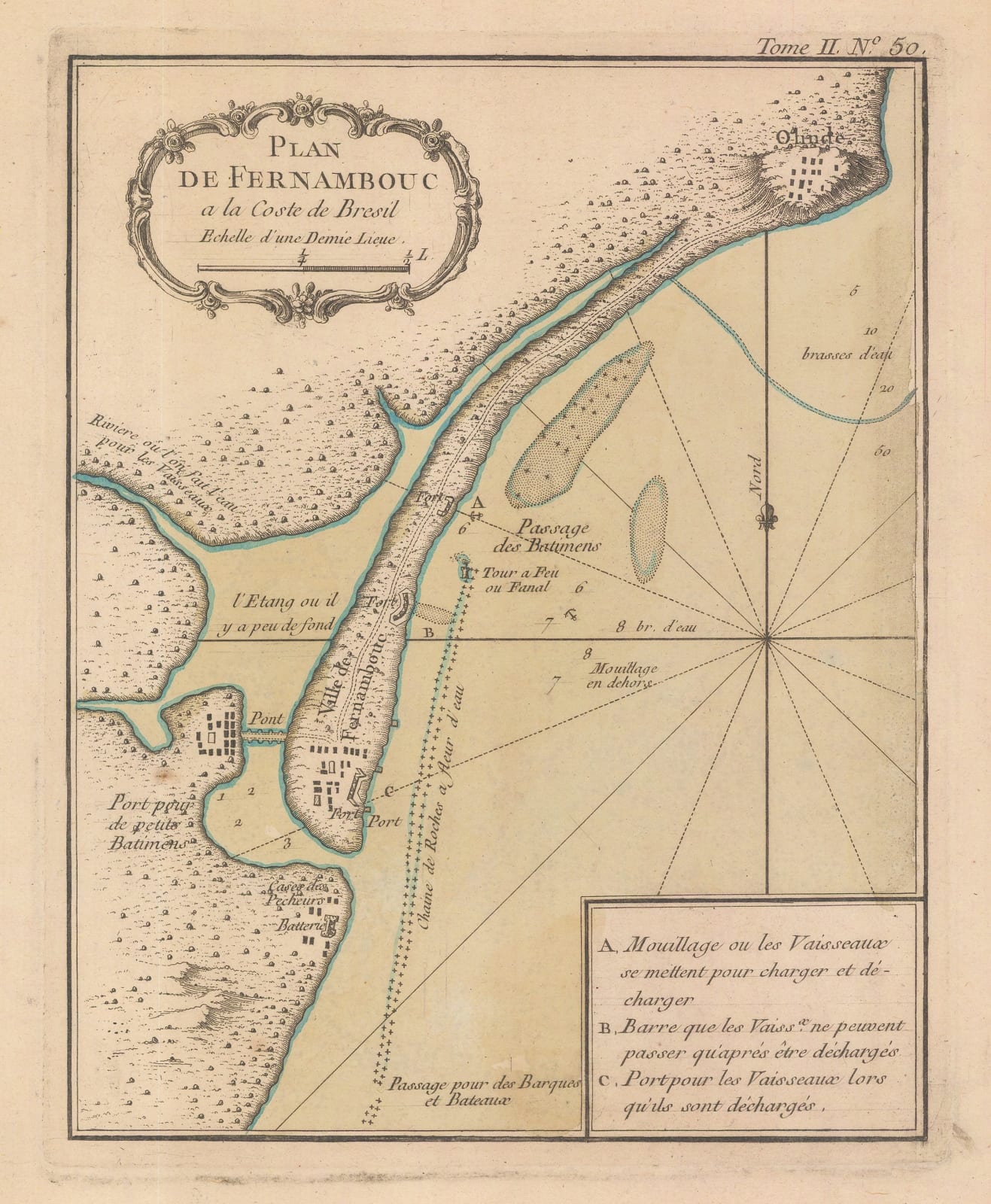Jacques-Nicolas Bellin
23 x 19 cm
This beautiful little chart shows the peninsula and site of the cities of Recife and Olinda in northern Brazil.
Jacques-Nicolas Bellin was one of the greatest 18th century map makers. He specialised in hydrography and was appointed to the French Hydrographic office at the young age of 18 in 1721. Twenty years later he was named the first “Ingenieur de la Marine” for the “Depot des Cartes et Plans de la Marine” as well as Hydrographer to Louis XV of France. Over a fifty year career, he published a multitude of important maps often from first hand sources provided by naval officers, merchants and government sources. His level of access was extraordinary. As well as publishing his own atlases, he was a contributor to many seminal French works on exploration, including Abbee Raynal’s “Histoire des Deux Indes”, Abbee Prevost’s “Histoire Generale des Voyages” and Pierre de Charlevoix’s “Histoire et Description Generale de la Nouvelle France”.
In 1762, Bellin decided to publish one of his most popular and accessible works: “Le Petit Atlas Maritime”. The work came out in 1764 in five volumes and proved extremely popular. Many of the maps were reduced versions which Bellin had either contributed or published previously. The five volumes usually contain between 575 and 590 maps with variations noted between individual examples. As the preparation took only two years, it is very likely that Bellin had a majority of these copper plates already available. The initial financial support for the atlas was from Etienne-Francois, Duc de Choiseul, a highly placed French politician who was credited for strengthening both the army and navy. Due to its accessibility, he perceived the ”Petit Atlas Maritime” as a method of publicising both the work of the “Depot de la Marine” and the Navy to the general public. Bellin includes a long dedication to Choiseul on the front of each volume.
For collectors today, the work presents one of the widest selection of extremely desirable smaller maps. They provide clear, concise and attractive geographical records of some of the most inaccessible and exotic areas of the world in the mid-18th century. Bellin was part of a group called “Les Philosophes”, the French counterpart to the pioneers of the English Age of Reason and his maps are a lasting legacy from the Age of French Enlightenment.
Although the main association with the name “Fernambouc” is the Brazilian state of Pernambuco, this chart focuses on the major towns of Olinda and Recife. The latter is actually named as “Fernambouc” on the map. This was a much charted region of the Brazilian coast. It was one of the first regions to produce sugar and quickly became very wealthy; it attracted the attention of the Dutch and became the capital of the short lived colony of Mauritsstadt established by the Dutch West India Company in the mid 17th century; it also rapidly became one of the main ports of call for ships sailing from Europe and Africa.
This map beautifully captures the peculiar peninsula upon which Recife is built with its southern tip joined to the mainland by a bridge. The peninsula is heavily defended with two large forts while the map also shows a fearsome reef stretched across the entrance to the inner harbour. Bellin also shows a small channel through this reef on the southern edge of the map. The source of this strategic weakness is unknown. A small key shows the locations on the eastern coast of the Peninsula where merchant ships load and unload cargo while a road links Recife to the nearby city of Olinda.
Original colour. [SAM3502]


